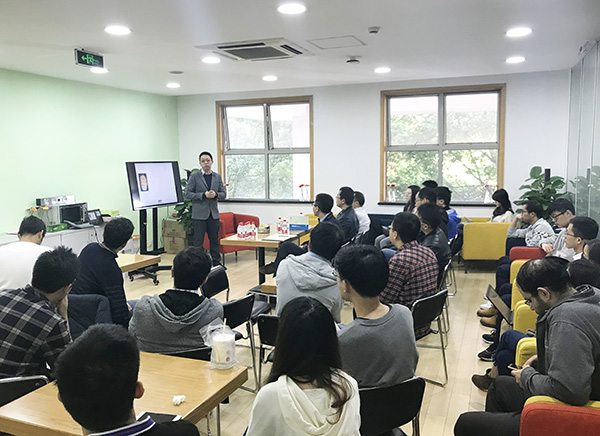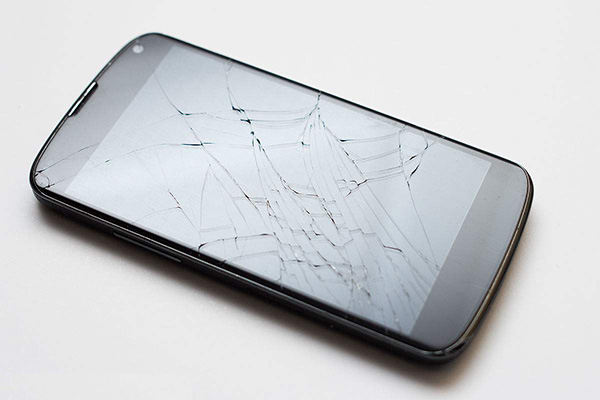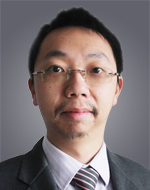The University of Michigan- Shanghai Jiao Tong University Joint Institute (UM-SJTU JI) stands at the forefront of technological innovation with its unique academic atmosphere and advanced scientific explore. JI boasts a strong research team which keeps innovating and strives to produce results that will lead the industry and ultimately benefit the human beings.
In order to help the public discover the mystery of scientific research, JI has launched a series of mini-workshop to introduce its faculty’s research.

In his recent presentation titled A Brief Introduction to the Phase Field Approach to Fracture, beginning with scripted oracle bones, Professor Yongxing Shen introduced to the audience the fracture phenomenon as observed and recorded in ancient Chinese historical records. He then traced the development of fracture mechanics, demonstrated its importance in engineering problems, and explained how to simulate fracture phenomenon with the phase field approach.
Fracture mechanics was initially just an academic discipline. Due to its successful application, fracture mechanics has become an important tool in engineering. Studies on predicting and preventing crack propagation have received a wide range of attention, especially in aeronautics, astronautics, and naval engineering.
 Fracture is ubiquitous in daily lives. The figure shows a cell phone with its screen cracked due to the phone being dropped.
Fracture is ubiquitous in daily lives. The figure shows a cell phone with its screen cracked due to the phone being dropped.
The phase field approach to fracture is one of the emerging areas of fracture mechanics. Compared with traditional simulation methods for fracture, the phase field approach introduces a field similar to the damage variable (called phase field) to describe different states of the material, e.g., the phase field of the pristine material takes value 0 and the fully broken material takes value 1. This approach is particularly attractive because it does not require extra criterion to simulate the nucleation, propagation, and branching of cracks. Now, this method has reached its maturity and has been applied to thin shell fracture, Li battery cracking, and hydraulic fracturing. The research group of Professor Shen has made many contributions in this field, including a paper marked as a Highly Cited Paper by Web of Science.
Besides almost 20 JI faculty and students, this workshop attracted a student all the way from Tongji University. Moreover, Professors Zhennan Zhang and Chun Wang from the School of Naval Architecture, Ocean and Civil Engineering, SJTU, attended the mini-workshop and actively participated in the discussion.
 Professor Yongxing Shen received his BEng degree from Tsinghua University in 2003, degrees of MS and Ph.D. from Stanford University in 2006 and 2008, respectively. Upon receiving his doctor’s degree he continued at Stanford as a Postdoctoral Scholar until 2011, when he moved to Barcelona to join the faculty of the Laboratori de Càlcul Numèric, Universitat Politècnica de Catalunya. While working in Barcelona he obtained a Marie Curie Career Integration Grant. In 2014 he joined the Joint Institute. He has published articles in important journals in computational mechanics in the areas of computer simulations on hydraulic fracturing, discontinuous Galerkin methods, shell fracture, locking-free methods for nearly incompressible elasticity, and universal meshes.
Professor Yongxing Shen received his BEng degree from Tsinghua University in 2003, degrees of MS and Ph.D. from Stanford University in 2006 and 2008, respectively. Upon receiving his doctor’s degree he continued at Stanford as a Postdoctoral Scholar until 2011, when he moved to Barcelona to join the faculty of the Laboratori de Càlcul Numèric, Universitat Politècnica de Catalunya. While working in Barcelona he obtained a Marie Curie Career Integration Grant. In 2014 he joined the Joint Institute. He has published articles in important journals in computational mechanics in the areas of computer simulations on hydraulic fracturing, discontinuous Galerkin methods, shell fracture, locking-free methods for nearly incompressible elasticity, and universal meshes.





